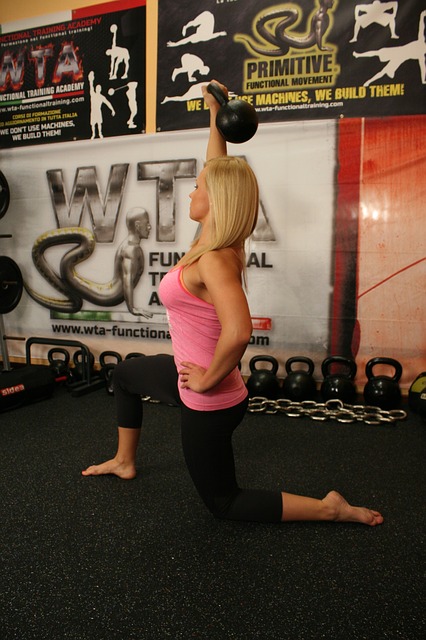Those of us who understand the importance of having “seasons” (cycles/phases) in our journey, tend to spend fall and winter focusing on building muscle size and strength. In fact, it’s very common to align your training phases with the actual seasons, taking advantage of the cover up in the colder months and then leaning out for the summer. If you are in this camp you probably will start planning your cutting phase to start late winter/early spring, giving you plenty of time to trim down for summer and avoid a last minute panic. Whether this is your first cutting phase or 10th, these tips will set you up for a successful experience.
1. Less is not more
Even though cutting calls for a caloric deficit, one of your goals should still be to maximize food intake while still losing fat. Starting with a small deficit of 5-10% allows you to do just that. Jumping straight to a big deficit like 20% means that should you need/want to adjust your deficit, you will be eating even less food (say it isn’t so!). While larger deficits might get the scale moving more quickly in the short term, they are also harder to stick with and can easily backfire.
2. Just say no to extreme restrictions
While cutting, you may choose to adjust your macro ratio, but it shouldn’t be so drastic where you go from eating 200g carbs to 50g or start putting foods like bread, bananas or your favorite treats on a banned food list! Overly restricting food groups can lead to an unhealthy relationship with food or, worse, eating disorders like binge eating. And, honestly, how long would you be able to maintain that? Remember, if you won’t be able to sustain it throughout your cut, it will offer little benefit. Lowering your calorie intake doesn’t mean eliminating food groups.
3. Keep rocking the protein
By consuming less calories you will encourage the body to use more of its own resources for energy, preferably fat stores. During the process, however, we want to minimize lean tissue loss as much as possible. Remember metabolically active tissue (aka muscle) boosts your metabolism rate. Staying on top of your protein intake will aid in keeping it around. In fact, you might consider adding a little extra protein.
4. Diet breaks do a body good!
Deficit eating should not become your new standard of eating. Plan to take diet breaks every 4-6 weeks or so and return to normal eating for a week or more. Extended periods of dieting will lead to a new LOWER maintenance. It may be tempting to continue eating at a deficit, especially if you are steadily seeing progress. Don’t do it. Take the break!
5. Fat loss does not equate to crazy cardio
 Many of us, especially those who have experienced weight loss in the past from doing extensive cardio, may think it is the perfect time to reintroduce cardio as the mainstay of our fitness program and, as a result, start adding more of it to our regimen. After all, we’re trying to create a a deficit, right? Wrong. This is a mistake! Recall what Alwyn Cosgrove, author of the best-selling series New Rules of Lifting, said about the hierarchy of fat loss – nutrition is most important and activities that do not maintain muscle or increase metabolism (aka cardio) are least important. The reality is that your training should continue to be based in strength. No need for excessive cardio shenanigans!
Many of us, especially those who have experienced weight loss in the past from doing extensive cardio, may think it is the perfect time to reintroduce cardio as the mainstay of our fitness program and, as a result, start adding more of it to our regimen. After all, we’re trying to create a a deficit, right? Wrong. This is a mistake! Recall what Alwyn Cosgrove, author of the best-selling series New Rules of Lifting, said about the hierarchy of fat loss – nutrition is most important and activities that do not maintain muscle or increase metabolism (aka cardio) are least important. The reality is that your training should continue to be based in strength. No need for excessive cardio shenanigans!
6. Manage other stress
Deficits are stressful to the body and can be stressful mentally. Plan for it by including more relaxing activities in your program, such as low intensity/casual walks, meditation or whatever helps you to unwind. Make sure you are getting sufficient quality sleep as well. Here’s a great app that can help you establish a meditation practice www.headspace.com.
7. Outsmart your deficit
No one likes to feel deprived and one way to avoid those feelings is by including more nutrient dense foods in your meals! Keeping the volume of food high with low-calorie high fiber foods like veggies and fruit may help you avoid those diet-like feelings. Bonus: You’ll boost your nutritional profile at the same time.
8. Have patience and manage expectations
Like every other phase of your fitness journey, cutting requires time, consistency and patience. If it is your first time cutting, you may have high expectations, however, just like building muscle takes time, losing fat does as well. Don’t expect your clothes to be suddenly falling off you after two weeks. You can speed the process up by truly being consistent with your efforts and keeping a positive mindset.
9. Remember, you are an individual
If you are starting your cutting phase with a friend or are following someone else’s journey via social media, resist the urge to start comparing your progress. It is tempting, but it can also be the perfect set up for disappointment. Two people following the same program, eating the same foods, etc. can yield very different results. Think about a few of the factors that come into play here – age, weight, height, genetics, body composition, hormone balance, lifestyle habits, etc. Don’t fall into the trap of judging your progress by another’s. Whether fast or slow, celebrate your progress!
10. Look at the big picture
Of you that is! Make sure that you are taking progress pics. Very often we zoom in on our (not so) favorite trouble spots, not noticing changes taking place in other areas. Our bodies really don’t care that you’d like to trim a few inches off your thighs or tummy. Fat loss happens where it happens. Period. Make sure you’re looking at the big picture to truly assess your progress.
Bottom line: your fat loss (cutting) phase, just as any other phase in your program (muscle building, maintenance, reset, chill) should have a beginning and an end. Staying in any one phase for too long can have adverse effects (read: no ONE phase will give you *all* the results, so cycle through them for continued results).
Are you curious about how the process works, or wondering what's in our Starter Kit E-Book? START HERE. We'll send you a free breakdown of the basics, exclusive videos explaining why everything that you've learned about diets have only led you astray, and an action plan to take your life back immediately.
No worries, we hate spam too!
Discover more from Eat More 2 Weigh Less
Subscribe to get the latest posts sent to your email.










Thanks for these tips! I am looking forward to my first cut. I have until at least April 1 before I cut so this info will be very helpful.
Woohoo! (If you can say that about cutting!) Take it slow, manage expectations, and avoid extremes and you’ll do great! Let us know how you make out.
I cant explain how much I have been through the past year. I have lost 50 lbs and been stuck for the last 5 months with 15ish to go. Somehow…even though I know its wrong I relate feeling hungry to…Im losing weight or if im satisfied im gonna gain. Or I get caught up with my feelings of wanting to shrink the fat and say I gotta eat less. Last week uped calories from 1500 to 1800 (working out 7 times in 5 days average three hours in gym…I know) and this week uped them to 1900 and plan to measure and weigh next friday and even go up to 2000. 5’7 148. Ive made a rule I have to hit these numbers and just trust because ive tried eating less and ive binged and purged. But one thing is for sure I wont give up. I cant. This helped me a ton with reasurrence and ideas.. Ill be reading this daily.
Hey Angel – Thanks for reading and your comment. In the beginning eating more is definitely more of a mindset/trust struggle. It will get easier as you increase the cals and start to trust your body more. Don’t give up and check out the forum for some additional support through the process ;)
Thanks for the cutting tips. I play Australian Rules Football and like to lift really heavy stuff. I am doing a strongman competition at the end of March and need to drop about 6 pounds before then. I will still have my goodies but just in moderation. Your tip be diligent in the kitchen is for me the most important tip. It is so easy to eat terrible things if you do not prepare. Nathan Jordan Jackhammer Strength Training
Hey Nathan – Yup, staying consistent in the kitchen without taking it overboard is essential, and of course, making room for goodies! Good luck with your upcoming competition and thanks for reading!